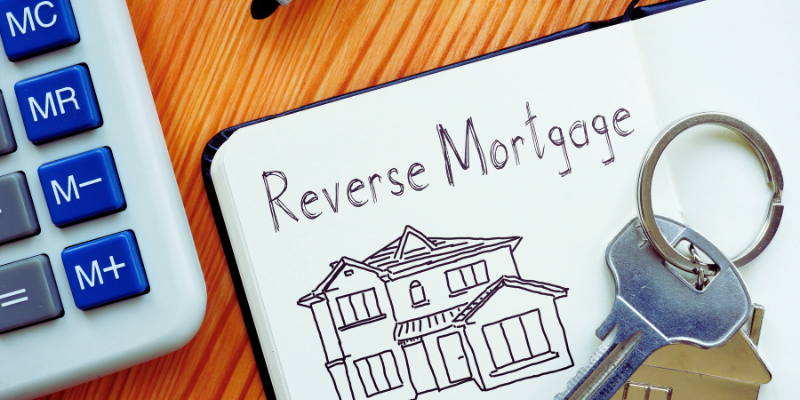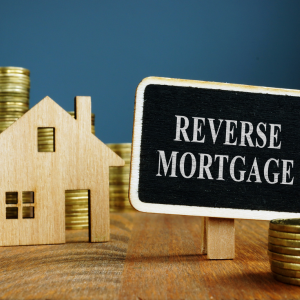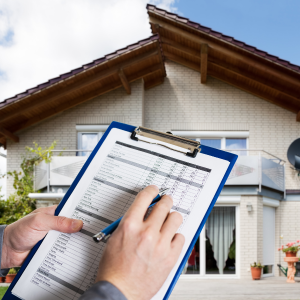Selling a Home With Reverse Mortgage in Oahu, HI
Living in Oahu is a dream: city life during the week and beach days on the weekend. And of course, there’s nothing like pau hana–the time to unwind, catch the sunset, and spend time with friends and family. But with the high cost of real estate, keeping up with home maintenance can become a real challenge, especially, as you approach retirement and hope to enjoy the clear skies and stunning landscapes that our island has to offer.
To help ease day-to-day expenses and create a little financial breathing room, you may have taken out a reverse mortgage or you might be considering one and want to understand your options. It’s a useful tool for many homeowners because as life changes, so do our needs. Sometimes, a fresh start or a change of scenery is just what’s needed.
If you’re thinking about selling a home with a reverse mortgage, this guide will walk you through what to expect and help you make an informed decision — and remember, we buy houses in Oahu, making the process faster and easier for you.
What is a Reverse Mortgage?
A reverse mortgage is a type of loan that allows homeowners to access the equity in their home without having to sell it. Unlike a traditional mortgage, where you make monthly payments to a lender, with a reverse mortgage, the lender pays you. This can come in the form of monthly payments, a lump sum, a line of credit, or a combination, depending on your agreement.
The most common type of reverse mortgage in Hawaii is Home Equity Conversion Mortgage (HECM) which is federally funded. While it may sound like a great option, it’s not for everyone. Reverse mortgages are designed specifically for homeowners who are 62 years or older. The goal is to help retirees, such as our respected kūpuna, stay in their homes while gaining financial flexibility. By using the equity built up over the years of homeownership, retirees can supplement their income during retirement.
With a reverse mortgage, there are no monthly mortgage payments required. However, the loan must be repaid if:
- the homeowner passes away,
- the home is sold, or
- the homeowners no longer live in the home or fail to meet the loan’s terms.
To qualify you must:
- be at least 62 years old,
- live in the home as your primary residence,
- have no delinquent federal debts, and
- Stay current on property taxes, homeowners insurance, and maintenance costs.
The older the borrower, the more they may be eligible to borrow, since age is a factor in calculating loan limits along with your home’s equity.
Can You Sell A House With a Reverse Mortgage?
Of course you can, it’s still your house! Even if you have a reverse mortgage, you retain the right to sell your property at any time.
However, there are a few important things to keep in mind. When you sell the home, your reverse mortgage loan becomes due, and this means you’ll need to pay off the full loan balance, including any accrued interest and fees.
Selling a home with a reverse mortgage is definitely possible, but it does involve a few more steps than a traditional sale. Whether you’re looking to sell your house fast in Honolulu or any other part of Hawaii, understanding the process ahead of time can help you make a smooth, informed transition.
How Do You Pay Off A Reverse Mortgage?
If the bank is paying you and there are no monthly payments required, you might be wondering: how do you eventually pay it back? In most cases, the loan is repaid when the home is sold. The proceeds from the sale go toward paying off the loan balance, including any interest and fees that have accumulated over time.
The good news is that there’s no prepayment penalty, so you can sell your home and pay off the reverse mortgage at any time. However, it’s important to review your loan terms before selling. Especially, if you have yet to receive the full value of your loan benefits. Selling too early might mean you miss out on the full financial advantage.
If your property has appreciated in value, paying off the reverse mortgage is usually straightforward. You simply sell the home, pay off the loan with what you made from the sale, and keep any remaining equity.
But if the real estate market shifts and your home’s value drops, things can get more complex. Fortunately, reverse mortgages are non-recourse loans, which means you (or your heirs) can never owe more than what the home is worth at the time of the sale. That’s where your mortgage insurance comes in, as it covers the difference between your loan balance and the home’s sale price if there’s a shortfall.
6 Steps To Selling A House With A Reverse Mortgage
1. Get in touch with your lender
The first step when considering selling your home is to contact the bank or lender that provided your reverse mortgage. Let them know that you’re thinking about selling, so you can get the necessary information and clarify what steps are required.
Specifically, ask them to:
- Review the terms of your reverse mortgage contract
- Provide the current loan payoff amount, including interest, fees, and any other charges
Knowing the exact loan balance will help you understand how much needs to be repaid when the home is sold, the type of reverse mortgage you have, and the terms of your agreement that can impact whether it’s better to sell now or wait. So be sure to ask if there are any financial benefits to holding off.
Don’t forget to request written confirmation, preferably by email, of everything discussed. This helps ensure that there’s no confusion later and that all parties are on the same page.
2. Have your home appraised
Now that you understand the terms of your reverse mortgage and know the exact amount you owe, the next step is to determine your home’s fair market value. This will help you assess whether selling the home will leave you with a profit after paying off the loan.
If you’re still on the fence about selling and want to avoid appraisal costs, you can start by reviewing recent sales of similar homes in your neighborhood to help get a general idea of your home’s value. However, for a more accurate picture, especially when planning a sale, it’s highly recommended to get a professional appraisal. This gives you a clearer view where you stand financially and helps you price your home properly.
3. Consider if it’s the right time to sell
Timing plays a big role in the success of your home’s sale. It’s important to understand current market trends in your neighborhood and whether now is the ideal time to list your property. For example, if home sales are slow, or you’re listing during the off-season, you may struggle to attract buyers or might have to lower your asking price.
This may become a problem if you have limited equity in your home. Selling in a weak market could mean you only break even or worse, walk away with nothing after paying off your reverse mortgage. That can be a problem if you’re counting on the sale of help and your next move or cover other expenses.
Consider consulting with a local real estate professional to help guide you in making a decision.
4. Decide how to sell your home
You may be surprised to learn that there are several upfront costs involved from selling your home. It’s important to factor in these additional expenses when deciding to sell.
Generally, you have two main options: traditional sale with a real estate agent, or selling to cash buyers.
One of the biggest expenses is the real estate agents commission fees, which is typically around 6% of the total sale price. Besides commissions, agents usually recommend making repairs to improve your home’s appeal. You’ll need to decide how much you’re willing to invest in repairs, if any. Preparing your home for a traditional sale also involves staging and hosting open houses. Cleaning and organizing can be challenging, especially if you’re older, so you may need to hire professionals. All these expenses can eat into your profits.
If you want to reduce costs and sell quickly, you can consider selling to cash buyers instead. Cash buyers don’t charge commission fees and buy homes as is, meaning no repairs or open houses required. They often close the deal quickly and may even cover closing costs. This can be a good option for older sellers looking for a hassle-free, stress-free sale.
5. Prepare and list the home for sale
After reviewing your options and deciding to move forward with the sale, the next step is to prepare your home and set a smart listing price. This is especially important when selling a home with a reverse mortgage, since your goal is to cover the loan balance and any selling costs, while still making a profit.
Start by gathering key numbers:
- your reverse mortgage loan balance, including any interest and fees;
- estimated selling expenses, such as repairs, real estate agent commission, and closing costs; and,
- your home’s current market value, based on recent comparable sale in your area.
A simple way to calculate your expected return looks like this:
Home’s Sale Price – (Loan Balance + Selling Costs) = Estimated Profit
If the numbers look good and the market is favorable, then you’re in a strong position to list your home. Setting the right price helps attract serious buyers and ensures you’re able to meet your financial obligations and hopefully walk away with cash in your pocket.
6. Sell the home and repay the loan
After crunching the numbers and deciding that selling is the best choice, the final step is to sell the home, close the sale, and use the proceeds to repay your reverse mortgage loan. Any remaining money after repayment is yours to keep.
Bottom Line: Selling a Home with Reverse Mortgage in Oahu, Hawaii
Selling a home with a reverse mortgage may require a bit more work than your usual sale, but with proper planning it’s absolutely possible to still come out on top. It might feel overwhelming at first but taking it one step at time is key–rash decisions never helped anyone. Understanding the process, working closely with your lender, and seeking guidance from real estate professionals can make the experience smoother and more successful.
Looking For A Trusted Cash Buyer In Oahu?
Look no further! With Oahu Home Buyers, you’re guaranteed a fair and competitive cash offer. We provide a faster, easier alternative for Homeowners who want to sell quickly without the hassle of repairs, marketing, or agent fees. Our process is straightforward, transparent and built on local expertise you can trust. We buy houses as-is, no repairs, no cleanups, and no commissions.
Get our no-obligation, fair cash offer today! Contact us at (808) 333-3677 or fill out the form below, we’ll get in touch with you within 24 hours.
Helpful Oahu Blog Articles
- Fun Facts About Oahu, Hawaii
- Selling a Home With Reversed Mortgage in Oahu, HI
- Real Estate Attorney Fees For Selling Your Home In Oahu, HI
- Understanding FSBO Costs For Selling Your Home In Oahu, HI
- Sell A Condemned House In Oahu, HI
- How To Switch Real Estate Agents In Oahu, HI
- Selling A Hoarder House In Oahu’s Real Estate Market
- Selling Your Oahu, HI Home As-is Without Renovations
- Responsibility For HOA Fees During Real Estate Closings In Oahu, HI
- Can You Back Out Of A Real Estate Contract In Oahu, HI






